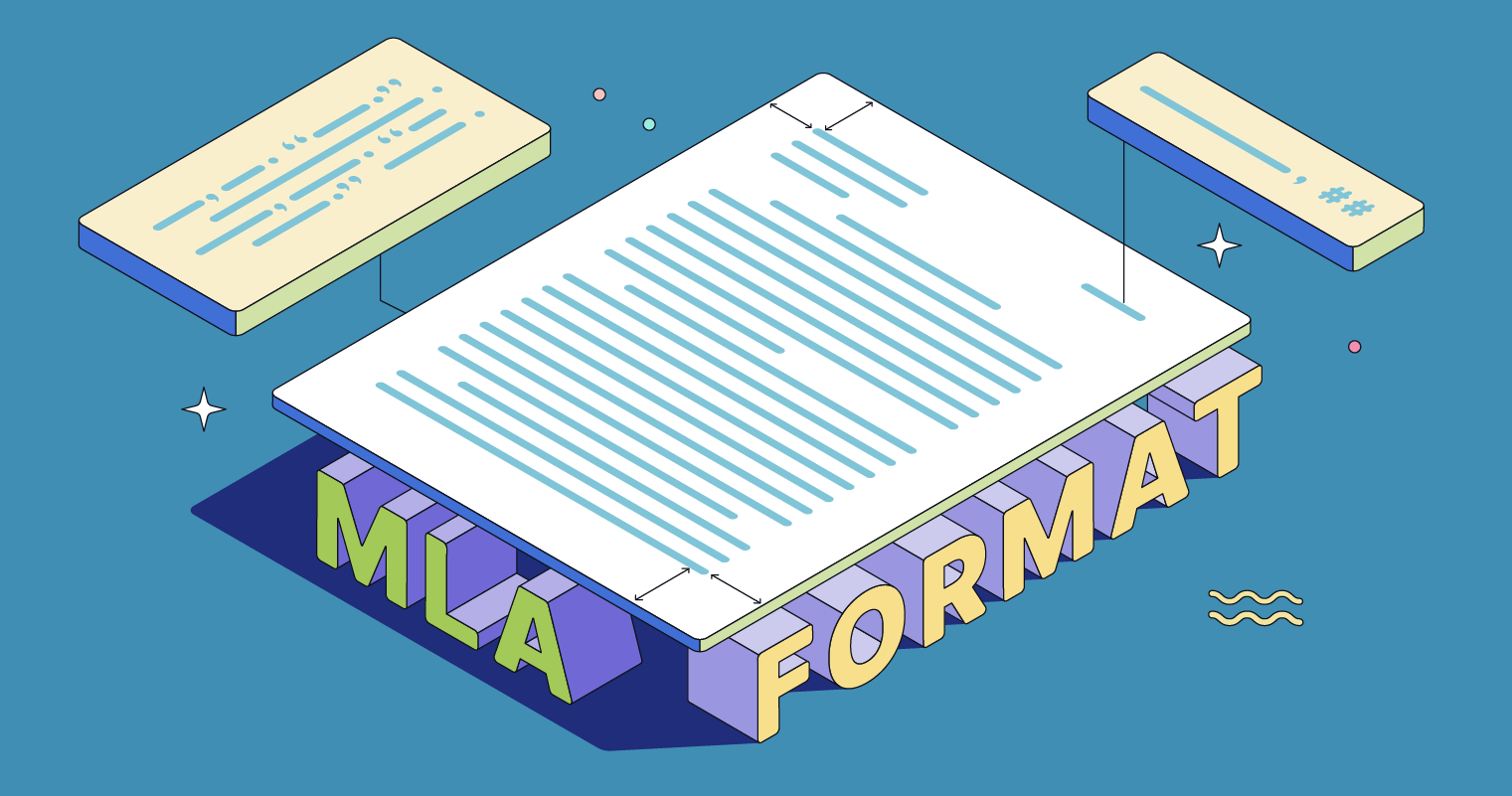MLA REFERENCING STYLE
MLA stands for Modern Language Association (MLA), which specifies standards for citing sources in a research article. For referencing sources in MLA format, you must need this system:
- In-text citations that include the page number and the author’s last name.
- A Works Cited list that includes comprehensive information about each source.
These references assist readers to access and retrieve the information by identifying and crediting the sources used in the paper. A heading in MLA style should be on the first page of your document, with one-inch margins, also there must be double spacing and indented paragraphs throughout. These brief “parenthetical citations” are then associated with extensively lengthy references, which you should provide in your works cited section.
Mla in-text Citations
The author’s last name and page number are enclosed in parentheses in an MLA in-text citation.
- Indicate both authors if a source contains two.
- When there are multiple authors on a source, just the first author should be listed before “et al.”
- Include the entire page range if the passage you’re quoting covers several pages. Use commas to separate the page numbers if you want to cite several non-consecutive pages at once.
|
EXAMPLE FOR ONE AUTHOR |
(James 42) |
|
EXAMPLE FOR TWO AUTHORS |
(James and Brown 35-40) |
|
FOR EXAMPLE FOR MULTIPLE AUTHORS |
(James et al. 56, 25) |
What and Where to Cite in Mla in-text
Before the period or other punctuation mark, place the parenthetical reference immediately behind the pertinent quote or paraphrase (except with block quotes, where the citation comes after the period).
Only include the page number in parentheses if the author’s name has already been mentioned in the text. Instead of “et al,” use “and others” or “and colleagues” when citing a source with multiple authors outside of parentheses.
Mla in-text Citation Example
According to James and Brown, Amazon is the most popular shopping site (15-19).
The quotation marks or paraphrased text are followed by in-text citations. They include a small portion of the details present in the standard MLA citation. The works-cited list at the end of a project contains the usual, or complete, reference.
Example of in-text Citation
|
In the book, The Joy Luck Club, the mother uses a vast amount of Chinese wisdom to explain the world and people’s temperaments. She states, “Every person is composed mainly of five elements…. A lot of fire and we have a bad temper…too little wood and you bent too fast…a lot of water and you flowed in many directions” (Tan 31). |
Combining References in Mla in-text
Multiple sources can be combined in a single pair of parentheses if a sentence is held up by more than one of them. Use a semicolon to separate the two sources.
Example:
|
Geo databases are the most effective native storage (Wilson 84; Sunil 65) |
Multiple References to the Same Source
The entire reference can be used the whole first time you acknowledge the same source in a paragraph, and then just the page number can be used for the following citations.
Example
|
Chicago style referencing is a popular citation style (Morrison and Smith 20-25). It is less popular than MLA (40). |
Referencing Anonymous Sources
The initial element of the Works Cited item must coincide with the in-text citation for sources that lack an author. This could be the title of the source or the name of the organization.
Reduce the source title or organization name, excluding any articles, to the first word or phrase in the in-text citation if it is longer than four words (a, an, and the). The alphabetized word for the source in the Works Cited should be the first word in the abbreviated title or organization name.
Format title using the general MLA guidelines: Put the title in quotation marks if the source is part of a bigger whole (such as a page on a website or a chapter of a book), and put the title in italics if the source is an identity work (such as an entire website or an entire book).
Examples
|
SOURCE TITLE/ORGANIZATION NAME |
IN-TEXT CITATION |
|
International Journal of Sustainable Development and World Ecology |
(International Journal246) |
|
“Sources of Greenhouse Gas Emissions” |
(“Sources”) |
Mla Work-cited List
The list of references or bibliography, which is also known as the list of works cited in MLA format, is located at the bottom of your essay. It provides comprehensive information about each source you referenced in an MLA in-text referencing. The Works Cited section of an MLA-formatted document should be left-aligned, double-spaced, and have 1-inch margins.
Essential Elements of Mla Work-cited List
Each Work-Cited item adheres to a structure consisting of nine essential elements, each of which provides details on the source.
Basic Format
|
Author. “Source Title.” Container Title, Other Contributors, Version, Number, Publisher, Publication date, Location. |

Hire Expert Writers at Affordable Price
WhatsApp
Get Assignment Help
The Works Cited Page Format
The list of sources for your paper can be located at the end. The design follows the general guidelines for an MLA-style paper:
- Name the page. Works centre-aligned, cited, and simple text (no italics, bold, or underline).
- Sort the entries alphabetically by the last name.
- Use double line spacing and left alignment (no extra space between entries).
- On entries that cross over onto further lines, use a hanging indent.
- Include a header in the upper right corner that includes your last name and the page number.
Sample
Citing the Website in Mla-style
You often don’t need to include a publisher for websites (including online publications like newspapers and magazines). The URL is included, with the “https://” prefix omitted. Add an access date in its place if a web page doesn’t have a publishing date.
|
Example |
Coates, Ta-Nehisi. “The Case for Reparations.” The Atlantic, Jun. 2015, www.theatlantic.com/magazine/archive/2015/06/the-case-for-reparations/361631/. |
Titles of Sources and Containers
Source and container titles are usually capitalized title cases (all main words capitalized). Quotation marks are used around sources that are fragments of a bigger work (such as a book chapter, a magazine article, or a website page). Instead, italics are used for the titles of self-contained materials, such as books, movies, periodicals, and websites. Italicization is always used for titles in container positions. Gives a brief summary of the source in the absence of a title. This description uses no italics or quotation marks, and only the first word is capitalized.
|
Example 1 |
Carter, Angela. “The Tiger’s Bride.” Burning Your Boats….. |
|
Example 2 |
Butler, Judith. Gender Trouble…. |
Reasons to Use Mla Style Referencing
There are many reasons why these particular principles and criteria for citation creation were formed. It is simpler for readers to look at a reference and comprehend the various parts of a source when academics and researchers in literature, speech, and countless other subjects all cite their works in the same way. When we look at an MLA reference, we can see the author, the source’s name, the date it was issued, and other identifying details.
If we didn’t all comply with the same rules, just think how challenging it would be to comprehend the numerous parts of a source! It would be challenging for readers to find the source themselves, in addition to making it challenging to comprehend the one that was utilized. This simplified procedure makes it easier for us to comprehend an author’s sources.







